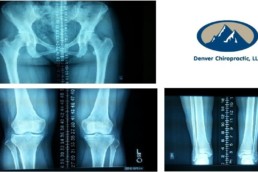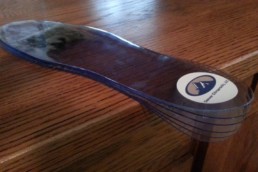Introduction
Leg Length Inequality
Gradual pain in various parts of the body can develop with a difference of 3 mm in the legs. Correcting a limb length difference can be easy with foot inserts that can make a dramatic difference in how the body absorbs ground reactive forces through walking and running.
A leg length imbalance (anisomelia) can come from a torqued pelvis or an actual anatomical length discrepancy. An anatomical leg length discrepancy can appear with a shortened tibia, femur, or a combination of both. An over pronated foot can also cause a short leg in which a custom orthotic can easily fix. Knowing which is important as the treatments are vastly different. A well trained chiropractor can easily spot the difference, which is not as easy as you might think. Sometimes there are combinations of a torqued pelvis and an anatomical difference.
Set up an appointment or consultation.
Effects of Living With a Leg Length Difference
- perpetual trigger points
- neck pain
- low back pain
- TMJ disorder
- headaches
- facet tropism
- facet arthropathy
- herniated discs
- scoliosis
- hip joint arthropathy
- knee joint arthropathy
- patellofemoral syndrome
- torqued pelvis
FAQ
Leg Length Inequality
There are several orthopedic tests that are used, but they are rudimentary and have some degree of error. Even using a tape measure with specific anatomic landmarks has its errors. Most leg length differences can be seen with a well trained eye, but I always recommend what is called a scanagram, or a x-ray bone length study (see picture above). This test will give a precise measurement in millimeters of the length difference.
The picture shown above measured out to be a 5 mm difference. The patient had chronic pain for 10 years in her left gluteal area. We started lift therapy and with in 6 months her pain disappeared. We have a special product that is a full foot insert (seen below) that comes in 1 mm increments that is placed underneath the existing insole. We initially started with 1 mm and waited 2 weeks before adding another millimeter insert. Even though it is just 1 mm, the body needs time to adapt as the muscles and joints will have a slightly different stress exerted on them. With this specific patient, we went up to 4 mm and backed off to 3 mm, as the patient did not cope very well with the 4 inserts. The patient is now pain free and utilizes a 3 mm lift inside her shoe. Chiropractic adjustments are must during the transition period to help the body adapt appropriately to the change in leg lengths. Be cautious if someone is recommending a heel lift and not a full foot lift as this can have its own detrimental effects. If you suspect that you have a leg length difference, please call our clinic, as we would love to help you.



